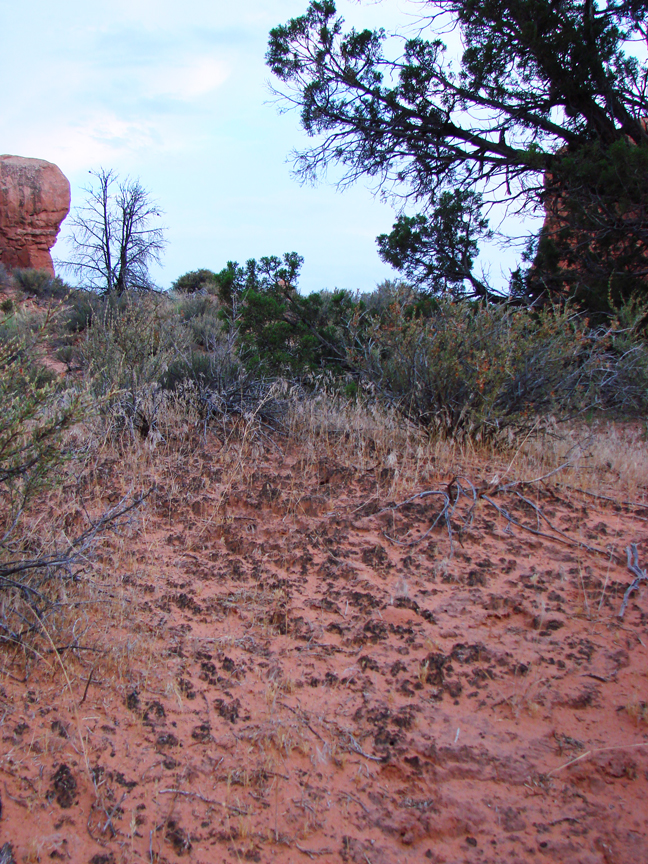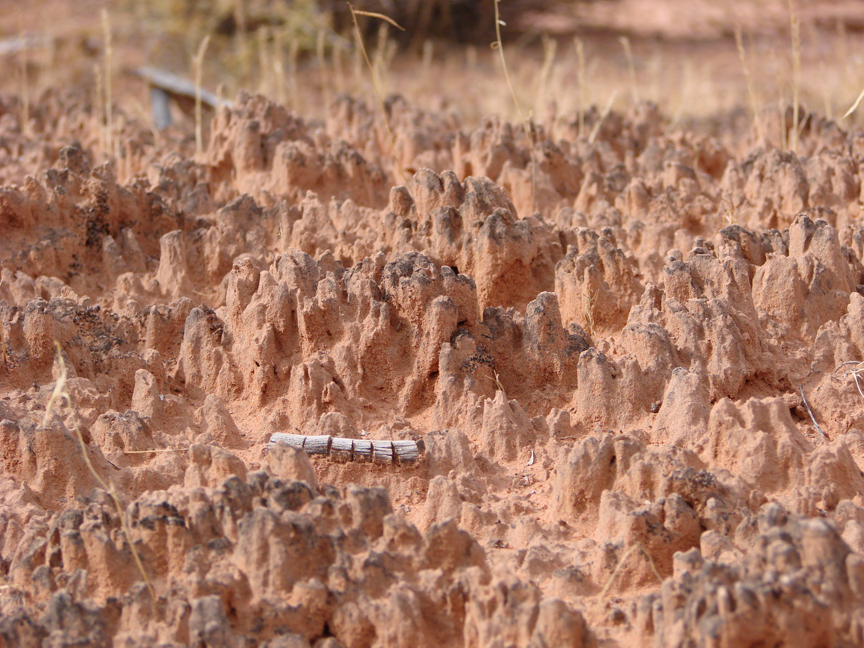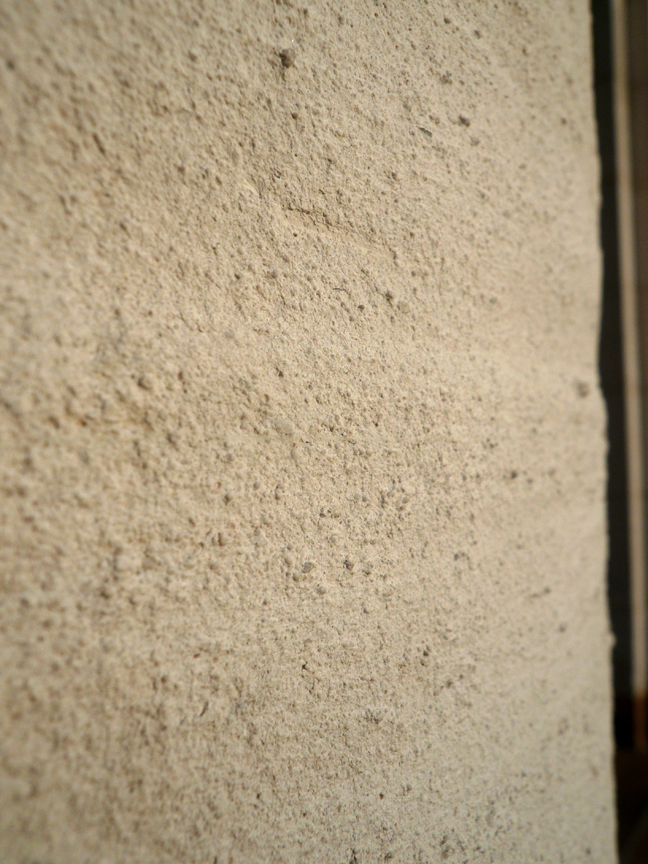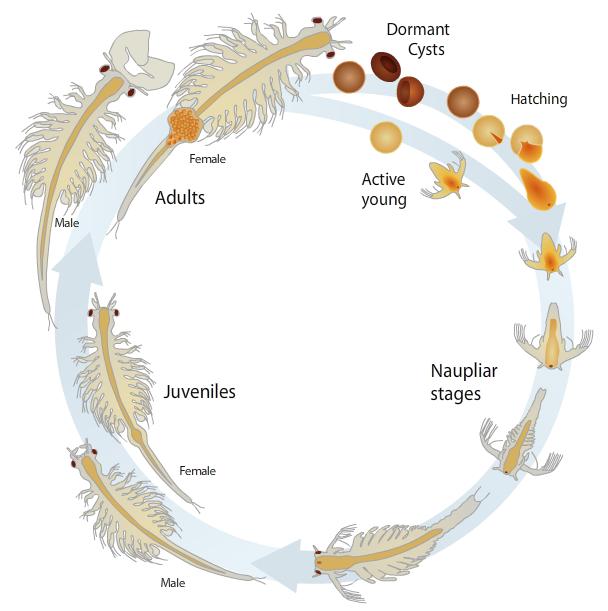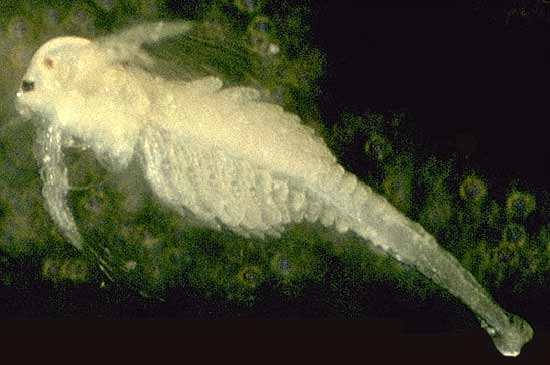
Shark Bay, Austalia
Courtesy Wayne A. Wurtsbaugh
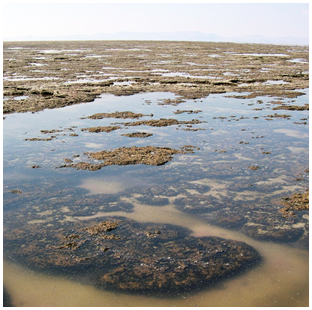 Exposed stromatolites in the
Exposed stromatolites in the
Great Salt Lake
Courtesy
Utah Division of Wildlife Resources
Great Salt Lake Ecosystem Program
(Hamlin Pool) during low tide.
Courtesy Linda L’Ai
Hi I’m Holly Strand.
Shark Bay in Northwest Australia is on my “places to see before I die” list. In a section of the bay called Hamelin Pond, colonies of microbes form hard, dome-shaped, deposits. Called stromatolites, these structures embody one of the oldest forms of life on earth. The fossil record of microbes in older stromatolites date back 3.5 billion years. Their antiquity, abundance, and persistence to modern times make stromatolites a fascinating subject for scientific inquiry.
Basically, stromatolites are layered structures formed primarily by cyanobacteria. This photosynthesizing bacteria changes the pH of the water causing calcium carbonate to precipitate over a mat of bacterial filaments. The minerals, along with grains of sediment in the water, are trapped in a layer of goo that surrounds the bacterial colonies. Then the lower layer bacteria grows upward and penetrates the most recent mineral and sediment layer. When this process is repeated over and over, a stromatolite is formed.
For over 2 billion years stromatolites dominated the shallow seas and formed extensive reef tracts rivaling those of modern coral reefs. However, today, stromatolites are relatively rare. You will usually find them growing in extreme environments, such as hypersaline water or thermal springs.
While Shark Bay boasts a stunning example of a modern stromatolite colony, you don’t have to go all the way to Australia. When lake levels are low, you can easily see them in the Great Salt Lake. They span hundreds of square kilometers in shallow shoreline waters. Some say that the Great Salt Lake contains some of the most extensive areal coverage of living stromatolites in the world.
One of the best places to view them is from the shore near Buffalo Point on Antelope Island. When conditions are clear, you can see them underwater at the mouth of the Great Salt Lake Marina.
More than just memorials to ancient life, the stromatolites also play a vital role in Great Salt Lake ecology. They are the principal habitat for the brine fly larvae and pupae. In turn, brine flies are a critical diet for goldeneye ducks, American avocets and many other water birds.
Thanks to Wayne Wurtsbaugh, from Utah State University’s College of Natural Resources for his support in developing this Wild About Utah episode.
For Wild About Utah, I’m Holly Strand.
Credits:
Photos: Courtesy Utah Division of Wildlife Resources, Wayne A. Wurtsbaugh and Linda L’Ai
Text: Holly Strand
Sources & Additional Reading:
National Park Service. Stomatolite Fossils. https://www.nps.gov/care/naturescience/stromatolite.htm [Accessed August 16, 2011]
Schopf, J.William. Anatoliy B Kudryavtsev; Andrew D Czaja; Abhishek B Tripathi. 2007. Evidence of Archean life: Stromatolites and microfossils. Precambian Research, 158. No. 3-4 pp. 141-155.
UNESCO Shark Bay Western Australia https://whc.unesco.org/en/list/578 [Accessed August 16, 2011]
University of California Museum of Paleontology. Cyanobacteria: Fossil Record https://www.ucmp.berkeley.edu/bacteria/cyanofr.html [Accessed August 16, 2011]
Walter, M R. 1983. Archean stromatolites – Evidence of the earth’s earliest benthos
Earth’s earliest biosphere: Its origin and evolution. Princeton, NJ, Princeton University Press.
Wurtsbaugh, W.A. 2009. Biostromes, brine flies, birds and the bioaccumulation of selenium in Great Salt Lake, Utah. Pp. 1-15 In: A. Oren, D. Naftz, P. Palacios & W.A. Wurtsbaugh (eds). Saline Lakes Around the World:Unique Systems with Unique Values. Natural Resources and Environmental Issues, volume XV. S.J. and Jessie Quinney Natural Resources Research Library, Logan , Utah. URL: https://www.cnr.usu.edu/quinney/files/uploads/NREI2009online.pdf


